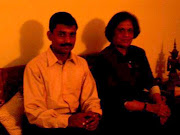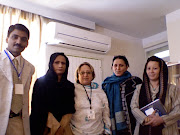As the people in all walks of life all over Bangladesh are still reeling from the bomb attacks of 15 March, a huge cache of sophisticated arms have been discovered and seized at Naikongchhari Upazill in Bandarban district of the Chittagong Hill Tracts (CHT). The Rapid Action Battalion (RAB) of the Chittagong and Rajshahi zones and the Bangladesh Rifles (BDR) recovered latest model AK – 47 rifles, 7716 rounds of bullets of the rifles at the forest at Jaraliar Char in Naikongchhari. This entire scenario has led to the question as to what is happening in Chittagong Hill Tracts today?
Besides the rise in Islamic fundamentalism, the political and law and order situation in Chittagong Hill Tracts (CHT) have deteriorated alarmingly in recent times as the two main rival organizations of the region, Parbattya Chattagram Jana Sanghati Samity (PCJSS) and the United People’s Democratic Front (UPDF), and several groups of armed cadres are resorting to open confrontations. Abductions are being followed by kidnappings while murders are being avenged by gruesome killings. A total of 500 persons were killed, around 100 abducted and more than 1000 injured during the last five years in CHT. As many as 24 armed clashes between the activists of PCJSS and UPDF had occurred during the same period. Besides, the miscreants were engaged in gun battles with army men and police eight times during the last four months. The armed cadres of both PCJSS and UPDF had set fire to tribal villages and markets in remote hill areas of CHT. Sources said the activities of the rival political parties in CHT resulted in more than 60 gunfights in the last eleven months. Moreover many incidents of abduction took place in the CHT including the kidnapping of three foreigners from Naniarchar under Rangamati district on February 16, 2001.
Looking back into the history of the CHT problem, (which this article intends to do) it is interesting to note that the CHT was an autonomously administered district, in British administered India and was safeguarded by the Chittagong Hill Tracts Regulation 1900, which prohibited sale and transfer of land to non-indigenous people. The Chittagong Hill Tracts (CHT) in southeastern Bangladesh covers an area of approximately 5,093 square miles, and borders India to the north and Myanmar (Burma) to the east. After the partition of British India in 1947, the CHT was given to Pakistan. As part of Pakistan, the Chittagong Hill Tracts lost its special status and autonomy under an amendment to the Pakistan Constitution in 1963. Pressure for land to cultivate had in the past led to the migration of large numbers of non-tribal people from other parts of Bangladesh into the Chittagong Hill Tracts.
The government of Pakistan, in a bid to open up the hill tracts and tap its potential hydro-electric resources, constructed the Kaptai Dam in 1962 which submerged 54,000 acres - nearly 40 percent - of the best agricultural land, and displaced about 100,000 indigenous people. Prior to the creation of Bangladesh in 1971, the population of the area consisted almost entirely of people from 13 different indigenous tribes. Between 1964 and 1971, the Pakistan government amended Regulation 1 of the Act of 1900 to allow ‘migration of non-tribals into the hill tracts and transfer ownership of land and other resources of CHT to non-tribal people from the plains’. The emergence of Bangladesh in 1971 saw the projection of a homogenous Bengali nationalism, with the citizen of Bangladesh defined as a Bengali in the Constitution. No separate status or identity was recognised. This triggered the ethnic conflict in the Chittagong Hill Tracts.
The struggle was spearheaded by Chittagong Hill Tracts People’s Solidarity Association, which is called as Parbattya Chattagram Jana Samhati Samiti (PCJSS). Its armed wing, Shanti Bahini (peace force) was formed in 1972. As the struggle gathered strength, the government began relocating Bengalis in the CHT. Reports suggests that about ‘400,000 Bengalis were sent to the CHT, both to ease the pressure on the land in other parts of Bangladesh and to dilute the dominance of the hill people in CHT’. In 1975, when the struggle strengthened, nearly a third of the Bangladesh army was deployed in the CHT as the government looked for a military solution. As armed confrontation between the security forces and Shanti Bahini escalated, communal harmony between the tribals and 'new' Bengali settlers deteriorated further. Ten major massacres by Bengali settlers and the security forces since 1980, led to an exodus of the tribal population across the border to Tripura in India.
It is interesting to understand that successive governments in Bangladesh moved from a military solution to eventually calling for a political solution in 1987 when General Ershad initiated the first of six rounds of peace talks. These at times resulted in limited agreements between the two sides. One such agreement reached in 1985 between the Government of General Ershad and a breakaway faction of the PCJSS headed by Priti Kumar Chakma resulted in the surrender of some 300 fighters who accepted a rehabilitation package offered by the government, but was rejected by the PCJSS headed by J.B. Larma. Further meetings between General Ershad's Government and a committee representing elements from the Chittagong Hill Tracts, resulted in the establishment of three district elected councils in Rangamati, in Khagrachari and in Bandarban, each composed of a two-thirds tribal majority with a tribal chairperson. The councils, which continue to function, have limited administrative and supervisory authority over a number of government departments including Fisheries, Agriculture, Small and Cottage Industries, Public Health and Primary Education.
During these talks, the PCJSS presented the following five-point demand: Removal of non-indigenous peoples settled in the CHT after 1947; Withdrawal of all Bangladeshi armed forces from the CHT including non-indigenous police force; Retention of the CHT regulations of 1900 and a constitutional provision restricting its amendment; Autonomy for the CHT with its own legislature and recognition of Jumma nation’s right to self-determination; and Deployment of a United Nations peace-keeping force and implementation of these measures under the auspices of the UN. But the agreement of 1989 only provided for ‘limited autonomy’. It was largely rejected and armed insurgency continued.
The following year, in 1992, a multi-party committee composed of representatives from the Bangladesh National Party (BNP), the Awami League and Jamaat-e-Islami was constituted by the government to identify solutions to the CHT problem. In response, the PCJSS declared a unilateral cease-fire. Seven rounds of talks were reportedly held between the committee and the PCJSS (1992-96) under the aegis of the BNP-led government, but there were no concrete results.
In October 1996, Prime Minister Sheikh Hasina, following up on the previous dialogue efforts, set up the National Committee on CHT to reinitiate the peace process. The first meeting between the 12-member committee and the PCJSS was held in December, followed by other meetings. This was the last series of negotiations between the government and the PCJSS that ended in December 1997. Eventually, the talks resulted in the signing of a peace treaty on December 2, 1997 between the National Committee and the PCJSS in the presence of Prime Minister Sheikh Hasina. The signing of the accord without outside mediation was an important achievement for both the Bangladesh Government and the tribal representatives.
The accord addresses four major issues in the CHT, namely: Devolution of power to the Hill District Councils, Regional Councils and CHT Ministry as the units of self-government in the CHT; Establishment of a land commission to deal with conflicts over land and natural resource rights; Recognition of the cultural integrity of the indigenous peoples and the CHT as a ‘tribal’ area and the withdrawal of military forces from CHT and the de-commissioning and rehabilitation of JSS forces.
Although the government has amended existing laws to provide for the implementation of the peace accord, the accord is facing a number of difficulties, which require urgent and continued attention.
● The first one is the slow pace of implementation by the government. Concern over this has been raised by the international community, by the human rights groups in and outside Bangladesh, and by the tribal people of the Chittagong Hill Tracts, at times threatening to derail the peace process altogether.
● The second issue is that the accord is not recognized by the main opposition party, the BNP led by Begum Khaleda Zia. Although the process of achieving peace in the Chittagong Hill Tracts began at the time of the BNP government, the BNP has distanced itself from the accord which was finalized under the Awami League government, amid fears that should a future BNP government take office, it may seek to repeal the Awami League enacted legislation that uphold the accord. Begum Khaleda Zia, the then leader of the Opposition in Parliament and Chairperson of Bangladesh Nationalist Party (BNP), opposed the accord and called the accord a 'sell out'. However when the BNP came in to power in October 2001, it could not change this problematic state of the Peace Accord. One of the new government’s initial action with regards the CHT was the keeping of the portfolio for the Ministry of CHT Affairs with the Prime Minister, and the appointment of a non-indigenous person - from among the state sponsored settlers – and a BNP colleague as head of the CHT Development Board – which is blamed to be a step revealing of its indifference to the Jummas and the Peace Accord.
● A third issue is the position of the disaffected political groups in the Chittagong Hill Tracts who consider the accord to have failed to respond to their aspiration of full autonomy. These include Pahari Gano Parishad (PGP or Hill Peoples Council), Pahari Chattra Parishad (PCP or Hill Students Council) and Hill Women Federation (HWF) who argue that the accord has failed to ''reflect the genuine hopes and aspirations of the peoples of the Chittagong Hill Tracts and has failed to fulfill the main demands of the Jumma people namely, constitutional recognition to the national ethnic minorities of the CHT with guarantee for Full Autonomy, restoration of traditional land rights, demilitarisation of the area, and withdrawal and resettlement of the Bengali settlers in the plain land.''
These perspectives have the potential to aggravate local issues and increase the tension between the CHT communities inherent in any post-conflict situations. They could affect questions relating to the withdrawal of the army from certain camps which, despite the provisions of the accord, has been only partially implemented; the possession of land which continues to remain unresolved; the CHT seats in the parliament which have traditionally gone to the national parties providing them with an effective vehicle to impose their own political agenda in the area which could now be at variance with the policies of the Regional Council; and the judicial processes which the tribal people are reluctant to use due to years of mistrust and which the more litigant non-tribal people could use to settle their differences with the tribal people.
In any case, there is concern that expectations in these regards have not been fulfilled. The post–accord grievances relate to the government’s failure to make the CHT a completely demilitarized zone, though the government has its own considerations in deciding to maintain army camps in the region. The tribals are also unhappy with the lack of full implementation of resettlement benefits for the returnees. Besides, there is dissatisfaction over the fact that the internally displaced persons have not been fully rehabilitated. This has led the situation in CHT more and more worse, and the common people are becoming gradually violent against the government policies. So if the CHT Accord is not implemented properly, the situation of CHT may turn into new directions in future.
In Bible, Isaiah prophesied that ‘we shall know peace when we see the lamb lie down with the lion’. It is expected to come true in any conflict situation. Only if the warring parties come together for a mutual agreement, shall we expect sustainable peace.












No comments:
Post a Comment